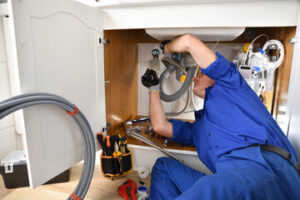Local SEO optimizes your brand’s online presence for searches that include location-specific terms. This helps Google find and showcase your business in search results, maps, and listings.

It requires optimizing your Google Business Profile, enhancing your website with local keywords and regularly updating your listing information. It also involves contributing to relevant local online directories and participating in community forums. Read on HighPoint Digital Media for more information.
When a business invests in local SEO, they’re getting more than just a boost in their website traffic. They’re also attracting targeted visitors that are actually interested in the services or products they offer. In turn, this leads to more sales and a higher return on investment for their advertising budget.
In order to increase your local visibility, you need to create quality content and optimize your website for local search. This includes making sure that your NAP information (name, address, and phone number) is consistent across all online listings. It also involves creating unique landing pages for each of your locations and services, which helps Google identify and rank them for relevant search queries.
Another important aspect of local SEO is incorporating keywords into your content. This is a key part of any SEO strategy, but it’s especially crucial for local search. By using keywords that are popular among your target audience, you’ll be more likely to attract the right kind of traffic.
Optimizing your website for local search also involves ensuring that your web pages load quickly. This can be done by compressing large images or using efficient Cascading Style Sheets. It’s also important to use mobile-friendly web design, as more and more people are searching on their phones.
Local SEO can also help you build your reputation and trust with local customers. This can be accomplished by encouraging happy customers to leave positive reviews and testimonials. It can also be achieved by promoting your business in local media outlets, such as newspapers or radio stations.
While traditional marketing methods like television and radio ads can be effective, they’re often expensive and have a high cost per lead. By contrast, local SEO is an inexpensive and effective way to promote your business. In addition, it’s more targeted than general advertising, which can result in a lower cost per conversion and a higher return on investment for your business.
With 76% of internet users searching for businesses in their area, local SEO is a must-have for any business that serves a specific geographic location. By ensuring that your website is easily found online and has accurate information, you can boost your visibility in local searches and increase foot traffic to your store or office.
Increased Conversions
Unlike traditional marketing methods such as direct mail or local newspaper ads, which aim to generate broad traffic with little return on investment, local SEO connects businesses with consumers who are already looking for their services. This targeted approach increases the likelihood of conversions, resulting in recurring paying customers and business growth within the local market.
With one in three searches carried out on a smartphone being related to local products or services, it’s vital that your business is visible online. Local SEO optimizes your website and Google Business Profile to ensure that you are visible to consumers in your area, helping you to achieve higher rankings and more organic web traffic.
Local search engine optimization involves optimizing your website and Google Business Profile with locally relevant keywords and on-page content, local citations, and social media marketing. It also focuses on ensuring that all of your information is accurate across the internet, from your website and GMB to consumer directories like Yelp, Facebook, Angie’s List, and more. Using a comprehensive audit tool such as WooRank or KWFinder can help you to identify and fix errors, which can negatively impact your organic search rankings and visibility.
In addition to making sure all of your information is correct, implementing mobile-friendly strategies and maintaining page speed (the longer it takes for a webpage to load, the more likely people will abandon it) are crucial in boosting your local SEO. It’s also a good idea to focus on adding dedicated service pages that list your offerings for each region in which you operate, allowing you to target a specific audience and increase your search ranking as a result.
As with any digital marketing strategy, it’s important to constantly measure and analyze your progress and results. Tools like Moz Local and BrightLocal can help you monitor your performance, track keyword rankings, and assess your local search position against competitors. With a little bit of time and effort, you can improve your rankings, increase traffic, and drive more qualified leads to your site – which will ultimately result in an improved return on investment for your business.
Increased Sales
Local SEO helps businesses connect with nearby consumers that are actively seeking the products and services they offer. This targeted approach increases conversions and grows a business’s customer base, ultimately contributing to long-term sales success within its local market.
A properly optimized website and Google Business profile can rank highly for relevant search terms, allowing customers to find and engage with your business. This is especially important for small and medium-sized businesses that operate in specific geographic areas, as they avoid competing with national brands for general search terms and instead focus on ranking highly for granular, local queries such as “web design near me” or “real estate agents in Nairobi.”
Optimizing your site with keywords that real people use when searching is one of the most effective local SEO practices. This includes incorporating locally-relevant keywords into titles, URLs, body text and image alt tags. Additionally, it is helpful to maintain a blog or content calendar that frequently updates with keyword-rich content related to your industry and location.
On-page optimizations are also an essential part of a successful local SEO strategy, as they can improve your website’s performance and usability. This can include things like ensuring that your NAP (Name, Address, Phone Number) details are correct on all online profiles, optimizing images for load speed and efficiently writing Cascading Style Sheets to reduce page loading times.
Finally, it is important to monitor your online reputation regularly, both on your GMB profile and other consumer directories and social media platforms. Getting positive reviews and ratings from your customers can significantly improve your visibility and boost your ranking in search results. This is why it is important to promote your business’s review links on social media and in consumer directories such as Yelp, Thumbtack, Foursquare, Angie’s List, etc.
As more and more consumers shift to digital channels for their shopping needs, local SEO is an essential marketing tool that can help businesses thrive in the ever-changing online landscape. By leveraging best practices in this space, both traditional brick-and-mortar businesses and local service providers can increase their visibility and drive qualified traffic to their websites, resulting in higher conversion rates and long-term growth potential.
Increased Return on Investment
As a result of investing in local SEO strategies, your company can expect a higher return on investment. This is because unlike traditional marketing methods, which may be expensive and can stop generating new leads once they are used up, local SEO provides a consistent stream of traffic and enquiries from qualified customers in your area.
Local SEO will increase your visibility and credibility online by helping you rank for search queries that are related to your business. This means that when potential customers are looking for coffee shops near them, your business will appear in the search results. This is because local searches are often more specific, and Google prioritizes businesses that are relevant to the user’s query.
Additionally, local SEO can help you get more reviews from customers. This is because people trust businesses that have a high number of positive reviews. It also helps when the reviews are written by real customers, which can add a sense of authenticity to your business.
Having a consistent online presence is also crucial for local SEO. This can be achieved by claiming and optimizing your Google Business Profile (formerly known as GMB). You should also ensure that all your business information is accurate and up to date. This includes your business name, address, phone number, website URL, and services. You should also regularly monitor your listings and deal with any discrepancies promptly.
Finally, you should make sure that your website is mobile-friendly and optimized for voice search. This is because more and more consumers are using hands-free search technology during the Covid-19 pandemic to avoid touching contaminated surfaces. This trend will likely continue after the pandemic, so it’s important to optimize your website and local listings for these types of searches.
To maximize the returns on your local SEO efforts, you should partner with a full-service digital marketing agency that can manage your SEO, social media, content, and website updates. A reputable agency can also save you time, boost your ROI, and demonstrate value. Contact Sooner Marketing to learn how we can help you #GetYaFound.




